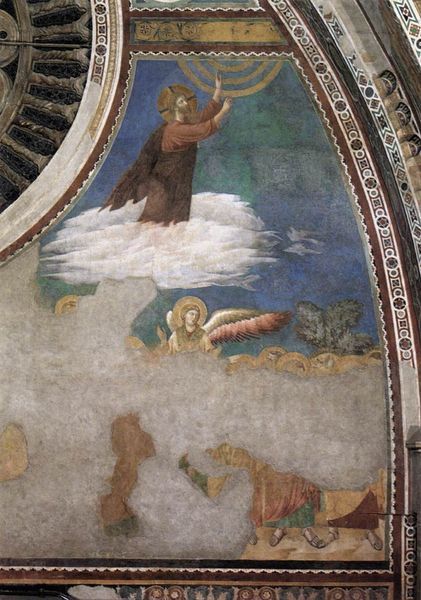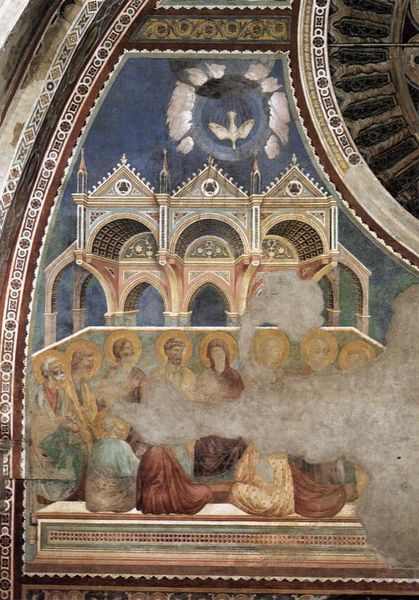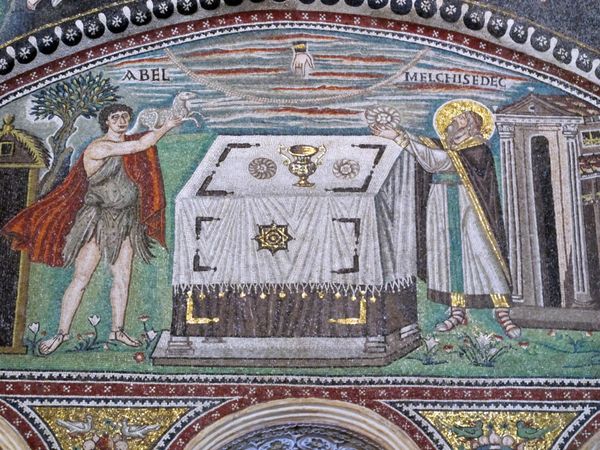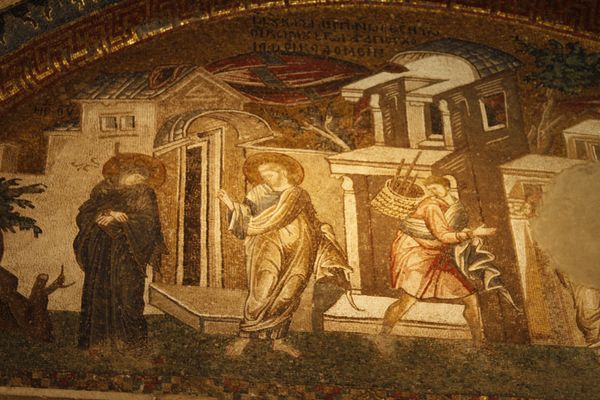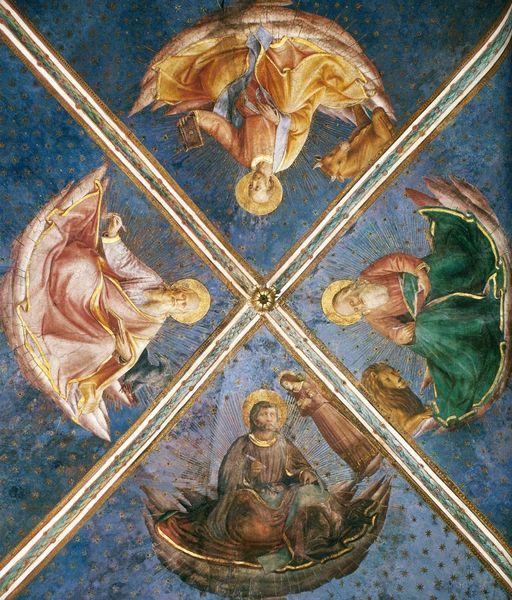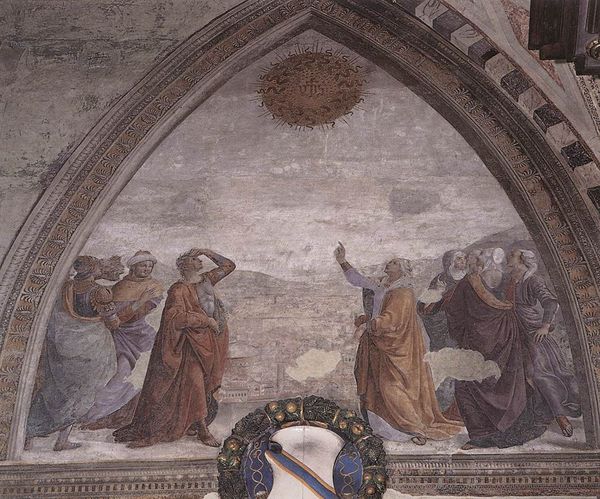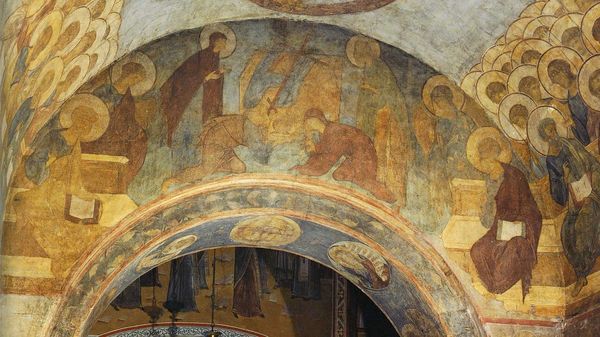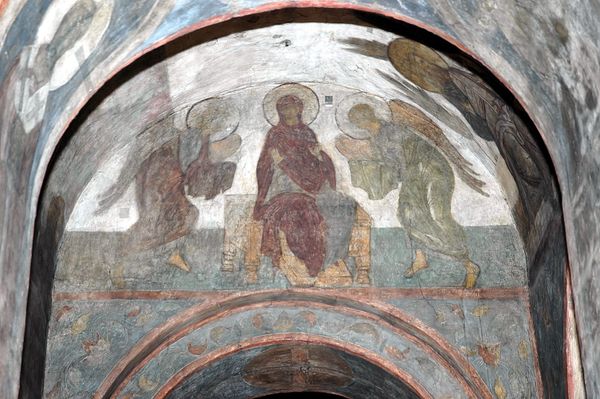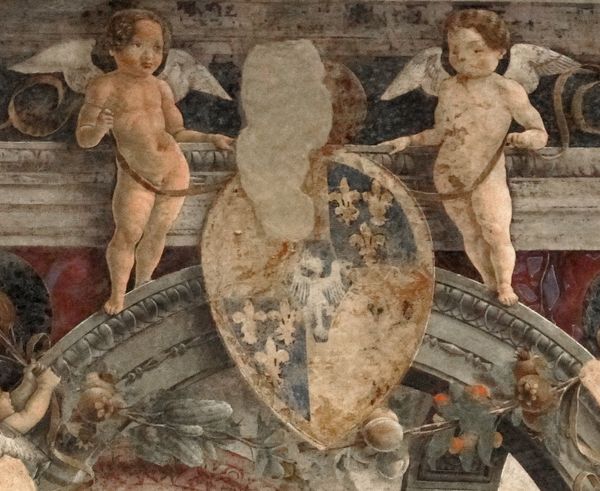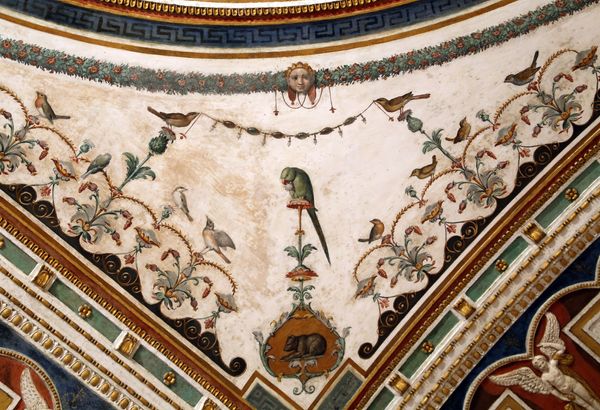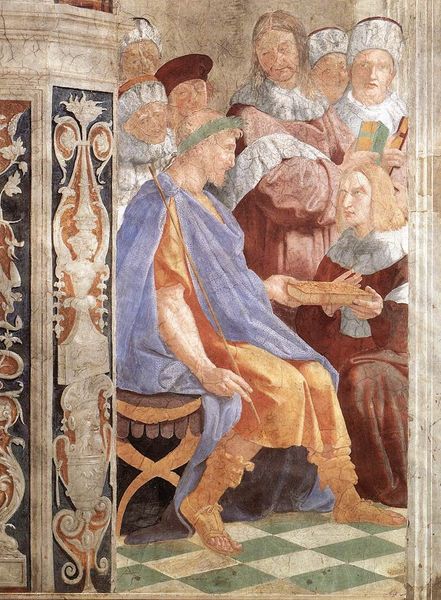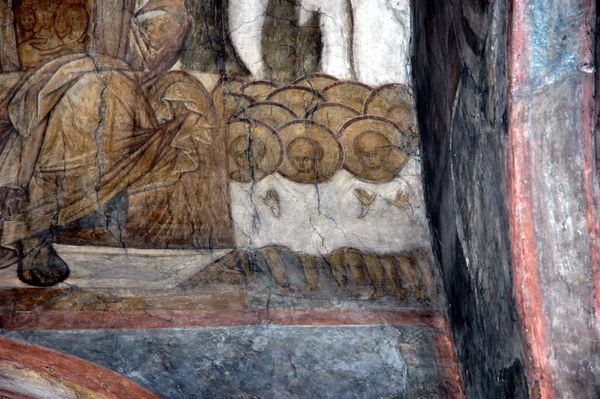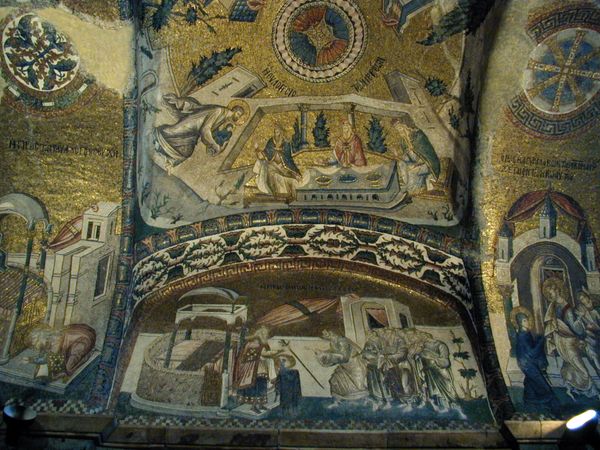
tempera, painting, fresco
#
medieval
#
narrative-art
#
tempera
#
painting
#
sculpture
#
holy-places
#
historic architecture
#
fresco
#
traditional architecture
#
christianity
#
italian-renaissance
Dimensions: 280 x 450 cm
Copyright: Public domain
Editor: So here we have "St John on Patmos" a fresco created around 1320 by Giotto, residing here in the Basilica di Santa Croce. My initial impression is this feeling of isolation, of being marooned but also maybe divinely protected? What do you make of it? Curator: Marooned... that’s interesting. For me, it’s about seeing beyond the immediate, about visionary experiences. The piece almost pulsates with otherworldly energy. Notice how Giotto uses the fresco medium itself – the way the light plays, those gorgeous earth tones. It feels so tactile, doesn't it? Almost like you could reach out and feel the saint's cloak. And above, this celestial jumble – the eagle, the angel, the…is that a dragon?! Editor: It is! What's that dragon doing there, exactly? Curator: Oh, that rascal! In Christian art, dragons can be a stand-in for all sorts of wickedness, for the anti-Christ himself. And John, bless his heart, is said to have visions on Patmos of the end times. So perhaps, we’re getting a sneak peek at Revelation here, Giotto-style. See the figure with the scythe? Pretty ominous. It's quite a potent mix. Do you get that sense of brewing drama too? Editor: Definitely. It’s less serene than I first thought and a lot more apocalyptic, in a strangely comforting way. Like, these are things that *need* to be seen, somehow. Curator: Comforting apocalypse, I like that. Maybe it’s because even amongst dragons and scythes, Giotto shows us there’s still beauty to be found. Even in the end. Editor: I'm now thinking it is hopeful, if end is an allegory to begin, what does that infer about how we perceive changes? Curator: Ah, there is an art student for you. Food for thought! I feel renewed!
Comments
No comments
Be the first to comment and join the conversation on the ultimate creative platform.
